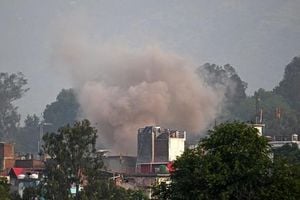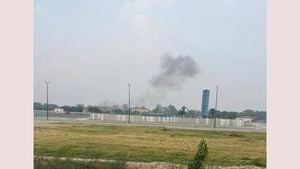On the morning of May 7, 2025, commuters in the Tokyo area faced significant disruptions as a result of a medical emergency at Akitsu Station, which impacted multiple train lines. According to reports from Saitama Shimbun, the Seibu Ikebukuro Line, along with the Seibu Yurakucho Line and the Toshima Line, experienced delays and suspensions starting around 7:33 AM. By 9:00 AM, the situation had evolved, and some trains were still affected, creating a ripple effect throughout the region's public transportation system.
The Tokyo Metro Fukutoshin Line also reported delays due to the same incident. The Public Transportation Open Data Center released information around 9:00 AM confirming that the medical emergency at Akitsu Station had a direct impact on the scheduling of some of its trains. This was a significant inconvenience for many passengers who rely on these lines for their daily commutes.
As the situation unfolded, commuters were advised to check for updates and expect delays. The emergency services were promptly dispatched to assist the individual in distress at Akitsu Station, ensuring that necessary medical care was provided as quickly as possible.
Public transportation in Tokyo is known for its efficiency and punctuality, making any disruption particularly noticeable. The Seibu Ikebukuro Line is a vital artery for many travelers in the area, connecting various neighborhoods and facilitating access to central Tokyo. Delays in this line often lead to a cascade of issues on connecting services, as seen in this instance.
In the wake of the incident, transit authorities worked diligently to restore normal service. The Seibu Railway and Tokyo Metro provided updates through their respective channels, keeping commuters informed about the status of their trains. However, the initial shock of the disruption left many passengers scrambling to find alternative routes.
This incident underscores the importance of swift emergency response in urban settings. Medical emergencies can arise unexpectedly, and the ability of transit authorities to manage such situations effectively is crucial for minimizing disruption. In this case, the quick action of emergency personnel likely played a significant role in ensuring the safety and health of the affected individual.
As the day progressed, services began to normalize, but not without leaving a mark on the morning commute. Many passengers expressed their frustrations online, sharing their experiences of the delays and the impact on their schedules. Social media platforms became a space for commuters to vent their frustrations, while also seeking updates from transit authorities.
In conclusion, while the medical emergency at Akitsu Station was an unfortunate event, it served as a reminder of the unpredictability of public transport systems. Commuters are often at the mercy of unforeseen circumstances, and the response of transit authorities can make a significant difference in how such incidents are managed. As services resumed, passengers were hopeful for smoother travels in the days ahead.




